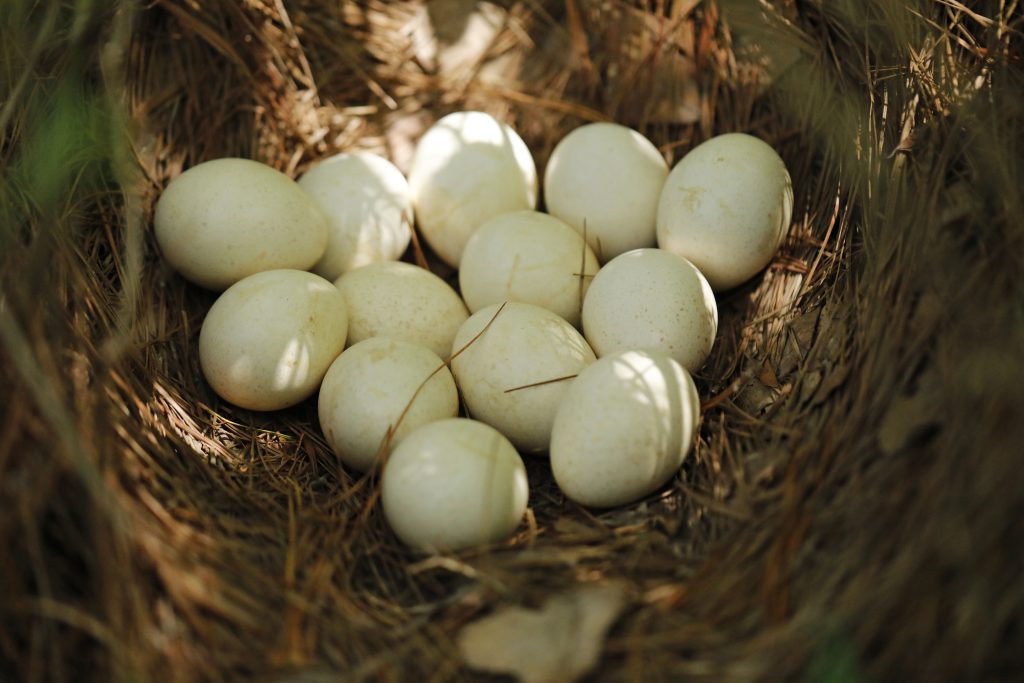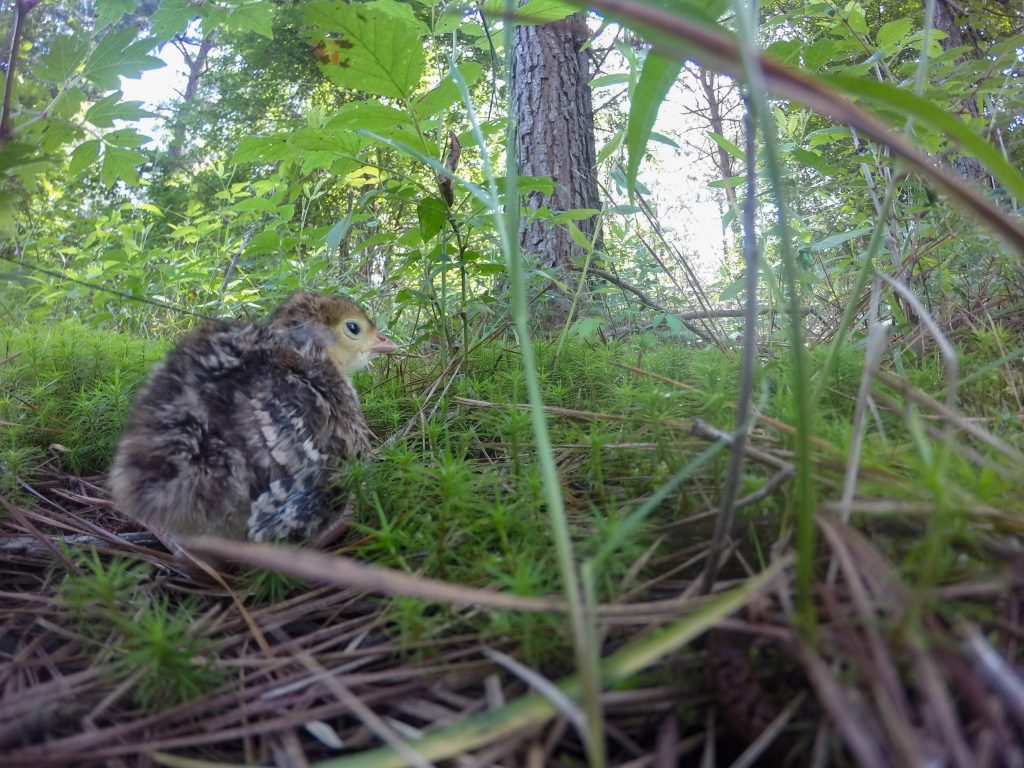Alpha & Omega
It is the beginning and the end. Wild turkeys survive with good nesting habitat before birth and they thrive with quality brooding habitat in their first few weeks and months. It is a requirement for their establishment of a foothold in the wild. Preyed upon before their first breath, wild turkeys require proper habitat until their last.
It is a cycle that began with the first generation of young. Nesting and brooding habitat is as important today as ever, and the NWTF serves as a facilitator to provide a beginning through its conservation initiatives like Habitat for the Hatch.

Nesting Habitat
Good nesting cover for hen wild turkeys generally is near an opening of suitable brood habitat, such as a road shoulder, trail, food plot, right of way, forest canopy gap or other opening. Nesting habitat includes lateral cover such as tree limbs, briars, vines, broom sedge or other vegetation. Nest sites usually provide good visibility of potential predators and good concealment of the hen and nest. Establishing nesting cover close to food and water sources allows hens to leave the nest daily and return without leaving too much of a footprint.


Brooding Habitat
Weeds can be a good thing, especially in fallow fields or wooded forests with a thin canopy that allows sunlight to feed the forest floor. Wild turkey brooding habitat, like ragweed and other native plant species, provide enough cover to conceal the body of the hen but is still short enough so it can still get a view of surroundings while feeding and leading a flock of poults in late spring, summer and early fall.
Poult Recruitment
Some states have reported poult recruitment below two poults per hen, which is an alarming indicator of a declining wild turkey population and can have a population-level effect. Improving brooding and nesting habitat is key to their survival.

NWTF Habitat for the Hatch Initiative
The NWTF continues critical work addressing the complete annual cycle of wild turkey habitat needs; however, the NWTF Habitat for the Hatch Initiative’s 1-million-acre goal targets establishing nesting habitats with quality brood range in close proximity.
The purpose of the NWTF’s Habitat for the Hatch initiative is to enhance wild turkey nesting and brood-rearing habitat through projects that improve forest and field health and resiliency at a landscape scale in Southeastern states through active management of over 1 million acres by 2033.
Landowner Information
If your property is in an area covered by an NWTF-funded biologists or forester, NWTF staff will connect with you. If the property isn’t in an area covered by NWTF staff, either a district biologist or a nearby grant-funded staff member will connect you with the right partner or agency staff member. Our objective is to get you in touch with someone that can help you learn about the agency programs that are available to assist with putting the right habitat on the ground. Email conservation@nwtf.net to get connected.
Habitat for the Hatch Initiative Timeframe: 2023-2033
2023-24 Acreage impacted: 74,763* (*An additional 196,001 acres of nesting and brood habitat was enhanced through chapters supporting prescribed burn teams as of September 2024).
Goal: NWTF estimates a need of $40 million – with partner collaboration – by the year 2033 to improve over 1 million acres of early successional habitat, which will enhance nesting and broodrearing conditions on both public and private lands. With an anticipated partner match ratio of 5:1, the NWTF has an estimated fundraising goal of $8 million through 2033.
States Impacted: Alabama, Arkansas, Florida, Georgia, Illinois, Indiana, Kansas, Kentucky, Louisiana, Mississippi, Missouri, North Carolina, Ohio, Oklahoma, South Carolina, Tennessee, Texas, and Virginia.
